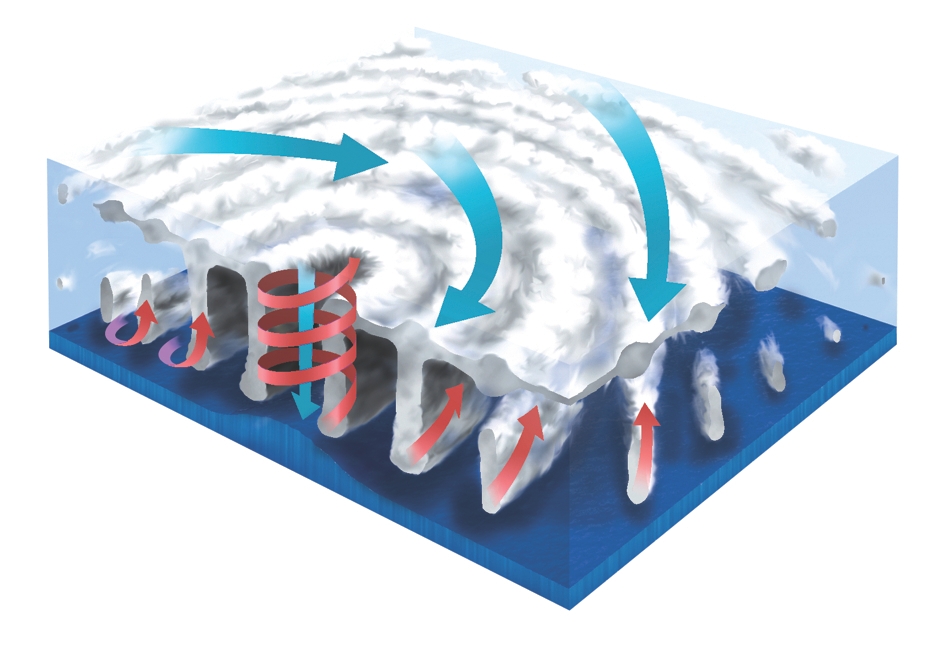Inside a hurricane

[fototag id=”insideahurricane”]
Hurricanes are massive heat engines. They form over tropical waters with a minimum temperature of 27˚C (80.6˚F). Hot water evaporates very quickly, rising up through the atmosphere until it condenses into clouds and water droplets. The incredible thing is that condensation itself creates even more heat. The recharged air soars even higher, building a cluster of towering, fat thunderstorms called a tropical disturbance.
Once the heat engine has been jump-started, rapid condensation within the storm continues to force air upward while more hot air rushes in from below to fill the void. This suction of hot air from the ocean surface creates lower and lower air pressure. When air rushes from high pressure to low pressure, it creates powerful winds. When wind velocity reaches 38mph (60 kph), the storm is called a tropical depression.
Satellite images of hurricanes show a swirling vortex of storm clouds. The spin is caused by two main forces: the Coriolis force and the pressure gradient. In the northern hemisphere, the Earth’s rotation pulls winds to the right (Coriolis force), but the extreme low pressure at the storm’s centre pulls them back to the left, creating a net counter- clockwise spin. The opposite is true south of the equator. As the heat engine chugs on, more water condenses, more heat rises, the pressure drops further and spin increases until winds reach 38 to 75mph (60 to 120 kph), enough to qualify as a tropical storm. Seven out of ten tropical storms spin even faster than 75 mph (120 kph), officially becoming a hurricane.




